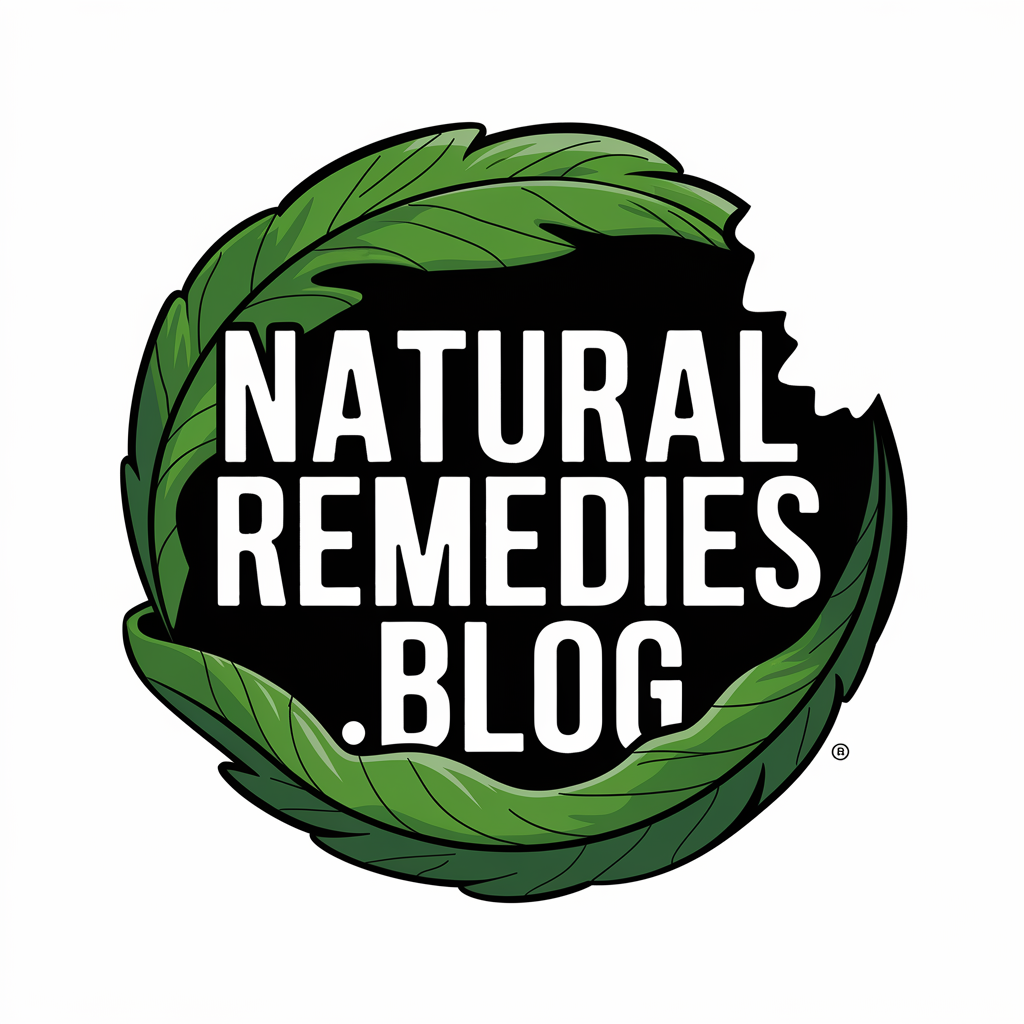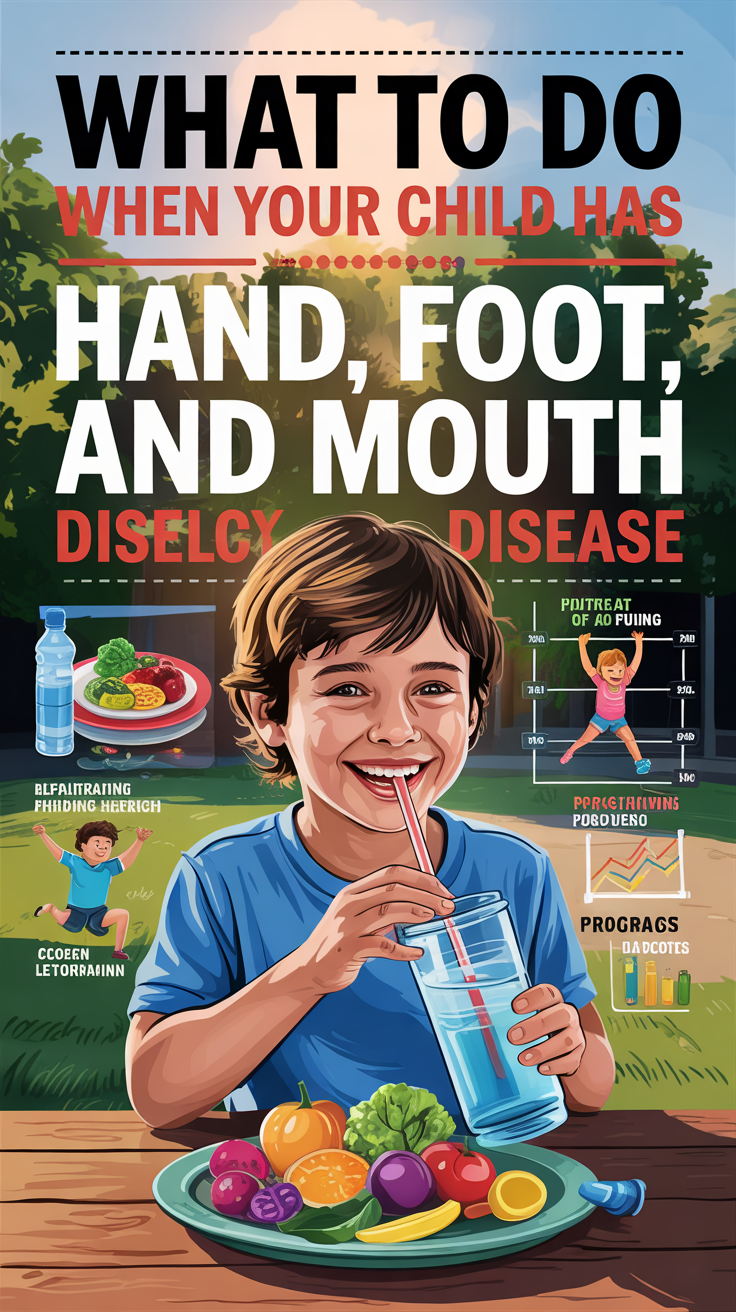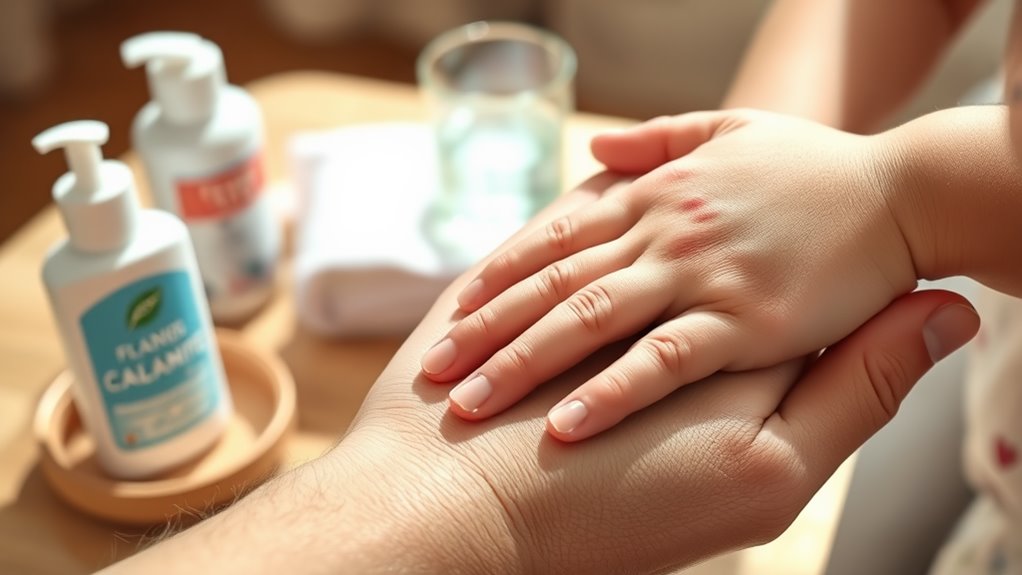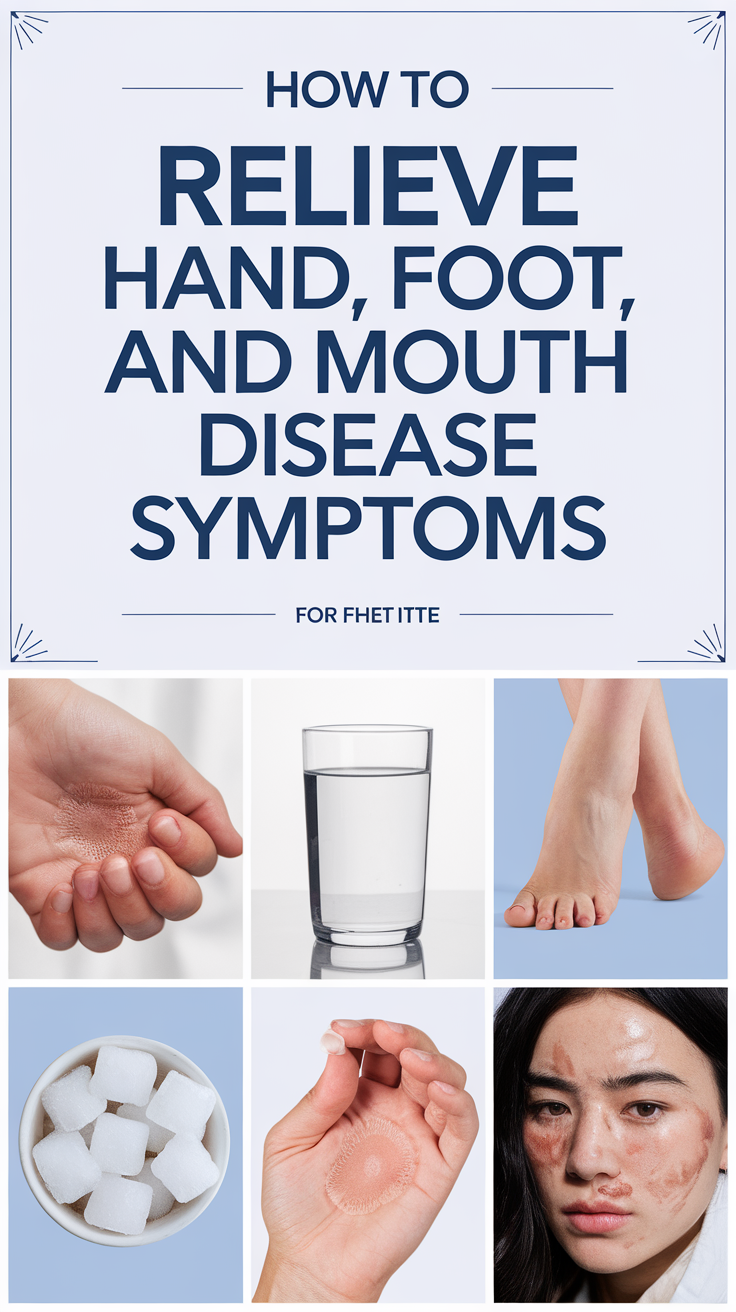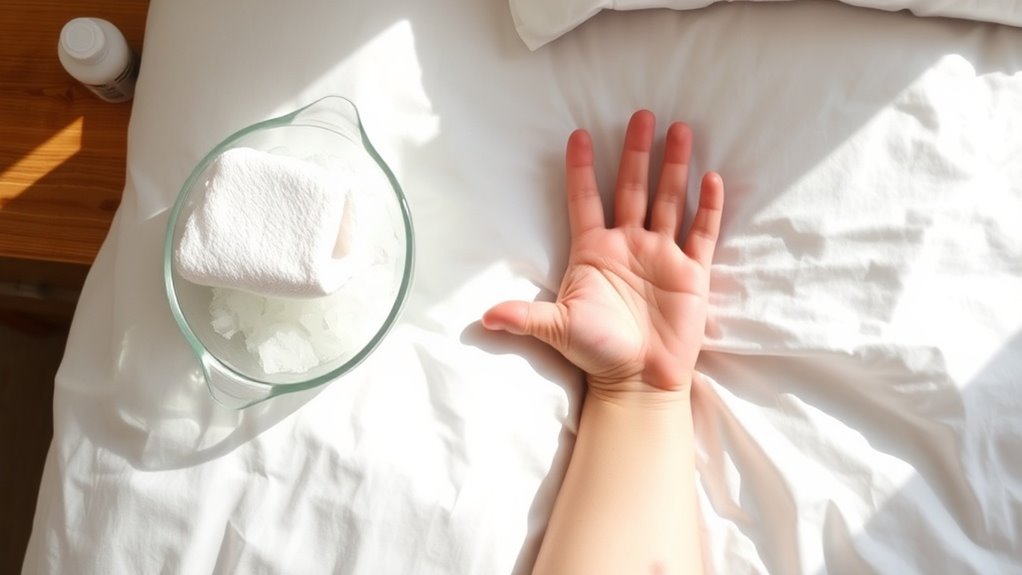What to Do When Your Child Has Hand, Foot, and Mouth Disease
When your child has hand, foot, and mouth disease (HFMD), start by recognizing symptoms like fever, mouth sores, and rashes. Manage their discomfort with acetaminophen or ibuprofen, and encourage soothing cold foods. It’s vital to keep them hydrated with water or popsicles, avoiding acidic juices. Watch for signs of dehydration and keep an eye on worsening symptoms. Maintaining good hygiene and preventing spread is key. There’s more to learn about caring for your child during this illness.
Recognizing the Symptoms of HFMD
How can you quickly identify Hand, Foot, and Mouth Disease (HFMD) in your child?
Start by watching for early flu-like symptoms like fever, headache, and sore throat, usually lasting one to two days.
Next, look for painful mouth sores with yellow-grey centers and red edges, making eating and drinking difficult. Mouth sores are a hallmark symptom that can significantly disrupt your child’s ability to eat.
Shortly after, a rash will likely appear on the palms, soles, and possibly the diaper area, featuring small red spots or blisters. Importantly, HFMD is highly contagious, so it’s essential to monitor your child for symptoms to prevent spreading the virus to others.
Recognizing these symptoms helps you consider hand foot and mouth disease remedies, ensuring your child gets the care they need to recover comfortably and swiftly.
Managing Symptoms and Providing Comfort
While managing symptoms of Hand, Foot, and Mouth Disease (HFMD) in your child can be challenging, focusing on comfort and relief is crucial for their recovery. Natural remedies can often support healing and help reduce discomfort during this time.
Use acetaminophen or ibuprofen to ease fever and pain, and steer clear of aspirin. Offer cold foods like ice cream and smoothies to help numb mouth sores. It’s important to remember that HFMD is caused by the coxsackievirus, which is highly contagious.
Maintain hygiene by gently washing blisters with mild soap and keeping them uncovered. Dress your child in loose clothing to avoid irritation, and apply cool compresses if needed.
Watch for worsening symptoms or signs of infection, and seek medical care when necessary for your child’s well-being. Trust your parental instincts and prioritize your child’s health and comfort.
Ensuring Proper Hydration
Here are some strategies to keep hydration levels up:
- Offer fluids like water, milk, and Pedialyte.
- Encourage popsicles or slushies for a fun way to drink.
- Avoid juice due to its acidity, which can irritate sores. Additionally, providing frozen yogurt can not only help with hydration but also soothe sore mouths due to its natural coldness.
- Provide soft foods like yogurt or pudding to make eating easier. Additionally, it’s important to monitor for symptoms of dehydration, which can occur if fluid intake is inadequate during this illness.
When to Contact a Healthcare Provider
Recognizing when to contact a healthcare provider for your child’s Hand, Foot, and Mouth Disease (HFMD) can be crucial for their well-being.
If your child has a persistent fever over 38°C (100.4°F) for more than 72 hours, or worsening symptoms, seek medical attention.
Watch for severe rashes, painful mouth sores, or signs of dehydration, like dark urine or dry mouth. Hand, Foot, and Mouth Disease is often accompanied by flu-like symptoms such as irritability and decreased appetite, indicating the need for careful monitoring. It is also vital to pay attention to dehydration signs, as they can worsen quickly.
Infants under six months showing HFMD symptoms require prompt evaluation.
Additionally, any unusual movements, breathing difficulties, or extreme lethargy signal urgent care needs.
When in doubt about your child’s condition, don’t hesitate to reach out for guidance.
Preventing the Spread of HFMD
Here are essential steps:
- Wash hands thoroughly with soap often—especially after using the toilet or before eating. Frequent hand washing can help prevent hand-foot-and-mouth disease (HFMD).
- Avoid close contact with those showing HFMD symptoms, and don’t share personal items. Ensuring strict hygiene practices can significantly help in reducing the spread of the virus.
- Regularly clean and disinfect high-touch surfaces.
- Limit exposure in crowded areas during outbreaks and consider vaccination for infants.
